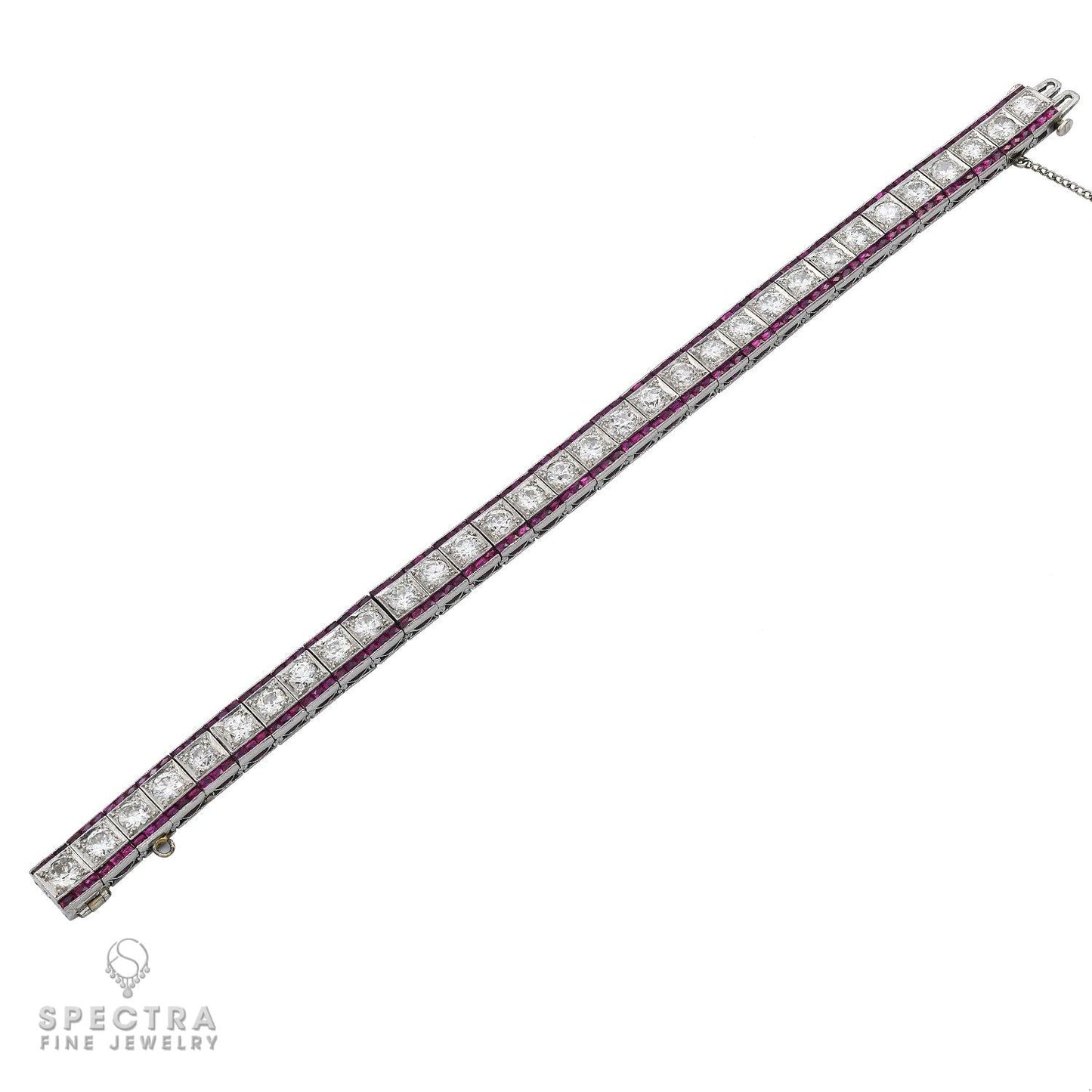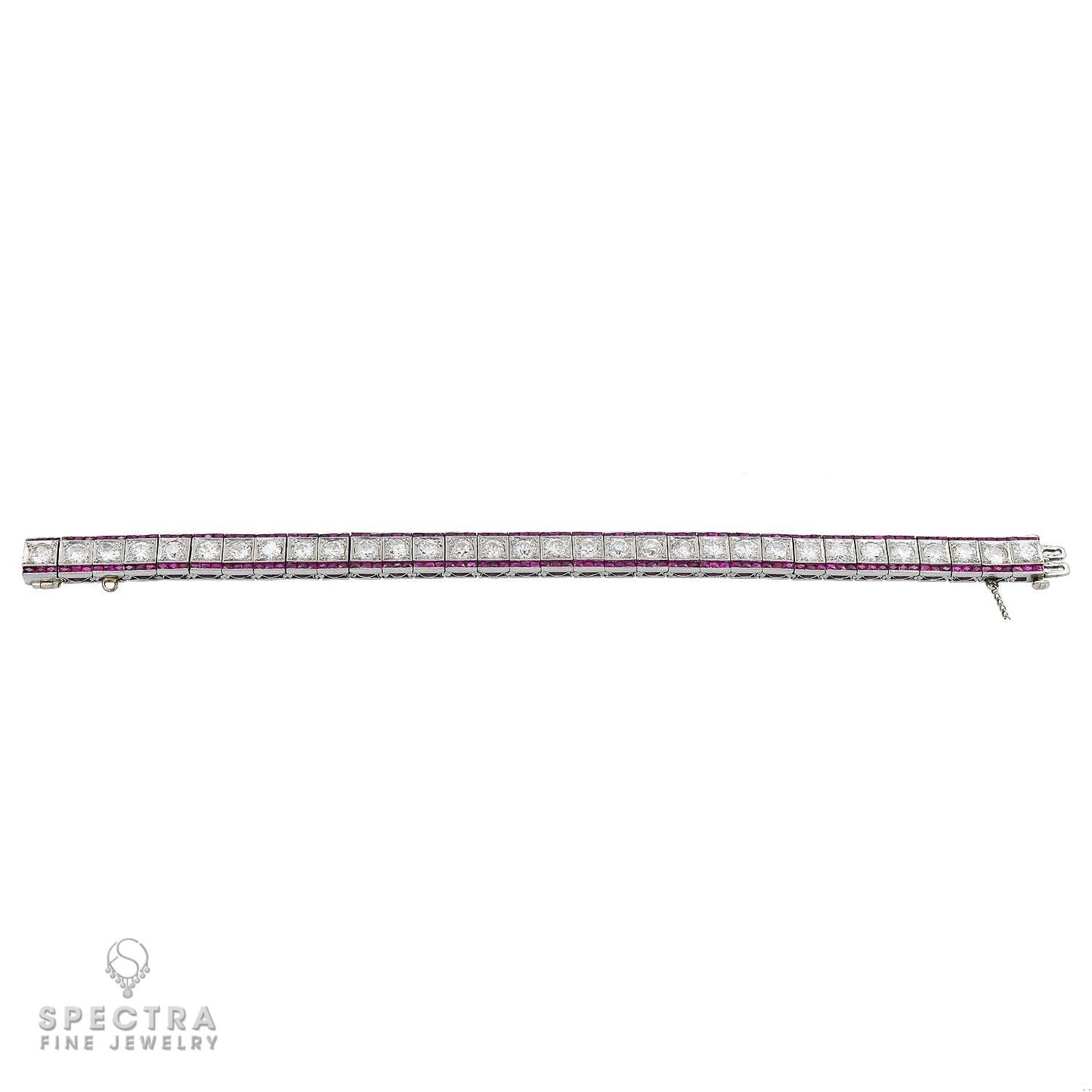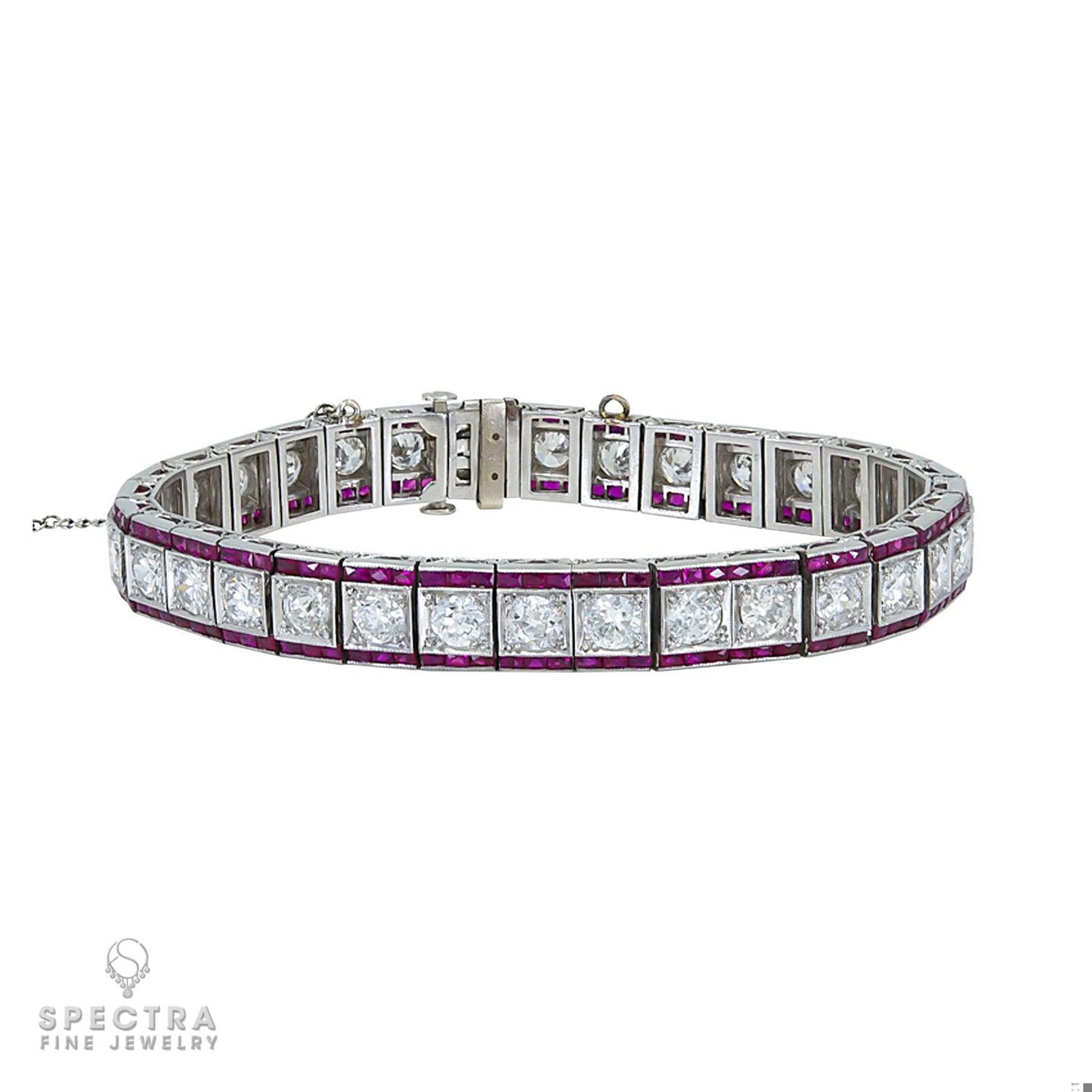Antique Art Deco Diamond Ruby Line Tennis Bracelet
Antique Art Deco Diamond Ruby Line Tennis Bracelet
Regular price
$27,000.00
Regular price
Sale price
$27,000.00
Unit price
per
Description
Carat Weight: 8.0 carats
Color/Clarity:
Size: 7"
Metal: Platinum
Weight: 47.87 grams
Period: 1920
Condition: Used - Previously owned, lightly worn, and in excellent condition
Rare and exquisite, this Antique Diamond Ruby Line Tennis Bracelet offers a glimpse into the opulent Art Deco era. Crafted circa 1920, it epitomizes the era's lavish style, with platinum adorned with round diamonds totaling 8.0 carats, accented by calibré-cut synthetic red rubies. The streamlined design, with articulated links embellished with single diamonds, exudes timeless elegance. Prong settings showcase the diamonds, with milgrain detailing adding sparkle. Platinum, chosen for its strength and malleability, provides the perfect backdrop for diamonds and rubies. Calibré-cut rubies, set three in a row, create a striking contrast. With an approximate length of 7" and a total weight of 47.87 grams, this bracelet is a testament to Art Deco craftsmanship and luxury.
Ref :B1010



-
SECURE ONLINE TRANSACTIONS
Your purchase and payment details are processed securely using up-to-date encryption technology.
-
AUTHENTICITY GUARANTEED
All our products are 100% authentic. We’ll give a full refund if you’re not satisfied with our products.
-
CONNECT WITH US
We treat our customers as valuable as our jewelry. Have questions? Send us an email.



